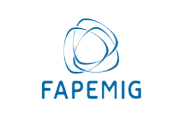Estimation of the environmental quality index of the city of Uberlândia using remote sensing
DOI:
10.22238/rc24482692201816015974Keywords:
Environmental Quality. Vegetation Indexes. Surface Temperature. Remote Sensing.Abstract
The use of geotechnologies and their applications with remote sensing and geographic information systems (GIS) have been widely used in recent years and contribute much to the advance in the knowledge of the landscape dynamics, being an excellent tool due to the aspects of easy visualization and speed to aid in decision making. In this context, the present work aims to develop and test a method for estimating environmental quality using four environmental indicators derived from satellite images for the city of Uberlândia/MG: TS (Surface Temperature), NDVI (Vegetation Difference Index Normalized), SAVI (Soil-Adjusted Vegetation Index) and NSI (Normalized Soil Difference Index). For this purpose, an image of the Landsat 8 satellite was used to determine the TS, correlating with the NDVI, SAVI and NSI indices obtained from a Sentinel-2A image, processed in the GIS ILWIS 3.4. The results show that NDVI and SAVI are correlated with each other, while NSI and TS are correlated with areas of higher anthropic construction. Although the environmental quality is determined by a large number of variables, the data obtained through remote sensing show potential in the estimation of environmental quality indices, being a quick access tool to obtain spatio-temporal information of urban environmental factors, contributing to the planning and implementation of public policies.
Downloads
References
BARREDO J.; BOSQUE J. Multicriteria evaluation methods for ordinal data in a GIS environment. USA: Geographical Systems. Vol. 5. 1998.313-327p.
DIAS, G. F. Educação e gestão ambiental. São Paulo: Gaia, 2006. 118 p.
HASENACK, H. Influência de variáveis ambientais sobre a temperatura do ar na área urbana de Porto Alegre, RS. 1989. 110 f. Dissertação (Mestrado em Ecologia), Universidade Federal do Rio Grande do Sul, Porto Alegre, 1989. Disponível em: <http://www.lume.ufrgs.br/handle/10183/1317>. Acesso em: 2 jun. 2017.
HUETE, A. R. A soil-adjusted vegetation index. Remote Sensing of Environment, Elsevier Science Publishing Co., New York, USA. 25: 295-309. 1988.
IBGE. Cidades. 2010. Disponível em: <http://cidades.ibge.gov.br/xtras/perfil.php?lang=&codmun=317020&search=||infogr%E1ficos:-informa%E7%F5es-completas >. Acesso em: 03 jul. 2017.
MENDONÇA, R. A. M. de. Uso das Geotecnologias para Gestão Ambiental: Experiências na Amazônia Meridional. Cuiabá: Instituto Centro de Vida, 2011. 22 p. Disponível em: <http://www.icv.org.br/wp-content/uploads/2013/08/uso-das-geocnologias-para-gest%C3%A3o-ambiental.pdf>. Acesso em: 03 jul. 2017.
OKE, T. R. City size and the urban heat island. Atmospheric Environment PergamonPres, v. 7, p. 769-779, 1973. Disponível em: <https://www.researchgate.net/profile/T_Oke/publication/248403918_City_Size_and_the_Urban_Heat_Island/links/5709fa6b08aea66081359098.pdf>. Acesso em: 03 jul. 2017.
POZONI, F. J; SHIMABUKURO, Y. E. Sensoriamento remoto no estudo da vegetação. São José dos Campos: Parêntese, 2007. 127 p.
RESENDE, C. R. C.; COLESANTI, M. T. M. Arborização da cidade de Uberlândia: um estudo do bairro Chácaras Tubalina e Quartel. In: 8° Encuentro de Geógrafos de America Latina, 8., 2001, Santiago. Anais. Santiago: EGAL, 2001. p.1-9. Disponível em:<http://observatoriogeograficoamericalatina.org.mx/egal8/Geografiasocioeconomica/Geografiaurbana/41.pdf>. Acesso em: 18 jul. 2017.
ROA, J. Estimación de áreas susceptibles a deslizamientos mediante datos e imágenessatelitales: cuencadelRíoMocotíes, estado Mérida-Venezuela. Revista Geográfica Venezolana, 48(2), 183-219, 2007.
ROGERS, A. S.; KEARNEY, M. S. Reducing signature variability in unmixing coastal marsh Thematic Mapper scenes using spectral indices. International Journal of Remote Sensing, 2004, v. 25, n. 12, p. 2317-2335.
ROSSET, L. A. F. G.; PINTO, S. dos A. F.; ALMEIDA, C. M. de. Geotecnologias aplicadas à caracterização das alterações da cobertura vegetal intra-urbana e da expansão urbana da cidade de Rio Claro (SP). In: XIII Simpósio Brasileiro de Sensoriamento Remoto, 13., 2007, Florianópolis. Anais. Florianópolis: SBSR, 2007. p.5479-5486. Disponível em: <http://marte.sid.inpe.br/col/dpi.inpe.br/sbsr@80/2006/11.07.17.42/doc/5479-5486.pdf>. Acesso em: 18 jul. 2017.
SHIMABUKURO, V. E.; NOVO, E. M.; PONZONI, F. J. Índice de vegetação e modelo linear de mistura espectral no monitoramento da região do pantanal. Pesq. agropec. bras., Brasilia, v.33, Número Especial, p1729-1737, 1998. Disponível em: <https://seer.sct.embrapa.br/index.php/pab/article/viewFile/5057/7206>. Acesso em 20 jul. 2017.
UBERLÂNDIA. Lei complementar nº 523, de 7 de abril de 2011. Dispõe sobre o parcelamento do solo do município de Uberlândia e de seus distritos e dá outras providências. Disponível em: <http://www.uberlandia.mg.gov.br/uploads/cms_b_arquivos/1814.pdf>. Acesso em: 02 jul. 2017.
USING THE USGS LANDSAT 8 PRODUCT. Landsat Missions. U.S. Department of the Interior, 2017. Disponível em: <https://landsat.usgs.gov/using-usgs-landsat-8-product > Acesso em 03 jul. 2017.
WENG, Q; LU, D; SCHUBRING, J. Estimation of land surface temperature-vegetation abundance relationship for urban heat island studies. Remote Sensing of Environment, v. 89, n. 4, p. 467-483.
Published
How to Cite
Issue
Section
License
Copyright (c) 2018 Revista Cerrados

This work is licensed under a Creative Commons Attribution-NonCommercial-NoDerivatives 4.0 International License.
In this journal, the copyrights for published articles belong to the author (s), with the rights of the first publication belonging to Revista Cerrados. The articles are publicly accessible, free to use, their own assignments, educational assignments and non-commercial applications.


















